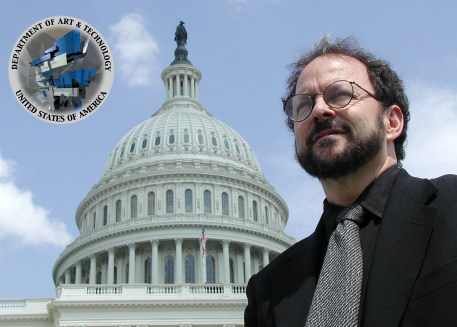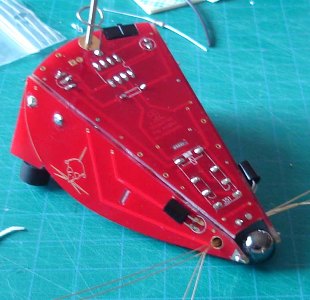Dorkbot DC is a monthly meeting of artists (sound/image/movement/etc.), designers, engineers, students and others in the DC area who are interested in electronic art (in the broadest sense of the term.) More info at http://www.dorkbot.org/dorkbotdcNext Meeting: Wednesday, January 24, 2007 |
Presentations for Next Meeting:

Randall Packer: The Artist as Mediator
Mediation in the current art discourse is the process in which the different disciplines are employed in questioning, challenging and experimenting with new models and forms that propose social and political change. This presentation describes artistic strategies and methodologies developed over the past five years in conjunction with the US Department of Art & Technology (US DAT), a virtual government agency created as a critique of the role of the artist in society and politics. The US DAT functions as a conduit between the arts and the broader political and economic culture for facilitating the artist's need to extend aesthetic inquiry into the social sphere where ideas become real action.
Packer is internationally recognized as a pioneering artist, composer, educator, and scholar in the field of multimedia. His work has been exhibited at museums and galleries throughout the world including Europe, Asia, and North America. He is Assistant Professor of Multimedia at American University in Washington, DC. His book and accompanying Web site, Multimedia: From Wagner to Virtual Reality , has been adopted internationally as one of the leading educational texts in the field. He is concerned with the aesthetic, philosophical, and socio-cultural impact of new media in an increasingly technological society.

Gareth Branwyn will give a talk and presentation on BEAM, a branch of robotics inspired by biology which eschews computer control whenever possible and focuses on simplicity, autonomy, and real-world survivability. While much of BEAM has remained in the realm of proof-of-concept and miniature hobby robotics, the utility and commercial potential of the approach are being proven by the success of the Robosapien line of home/toy robotics, created by BEAM inventor Mark Tilden. Gareth will give a short presentation on the origins of BEAM, the main precepts behind it, and some of the simple control architectures used. He will also show off some of the BEAM robots he's built, including the two that graced the cover of MAKE Vol. 6.
Branwyn writes about technology and tech culture. For 12 years, he was a contributing editor to Wired, co-creating and writing the Jargon Watch column. Through that work, he was asked to be the consultant on computer and Internet terms for the Oxford American Dictionary. Gareth is currently a contributing writer and on the Advisory Board for O'Reilly's MAKE magazine, and he also writes for MAKE's sister publication, CRAFT.
Gareth is also the author of numerous books, including the first book about the World Wide Web (Mosaic Quick Tour: Accessing and Navigating the World Wide Web) and The Happy Mutant Handbook.
One of his most recent works is the Absolute Beginner's Guide to Building Robots. He prides himself on the fact that this book has garnered him fanmail from everybody from 13-year old kids building science faire projects to university cybernetics professors using it to teach robotics and AI.
Gareth Branwyn is also "Cyborg-in-Chief" of the popular personal tech blog Street Tech (streettech.com).